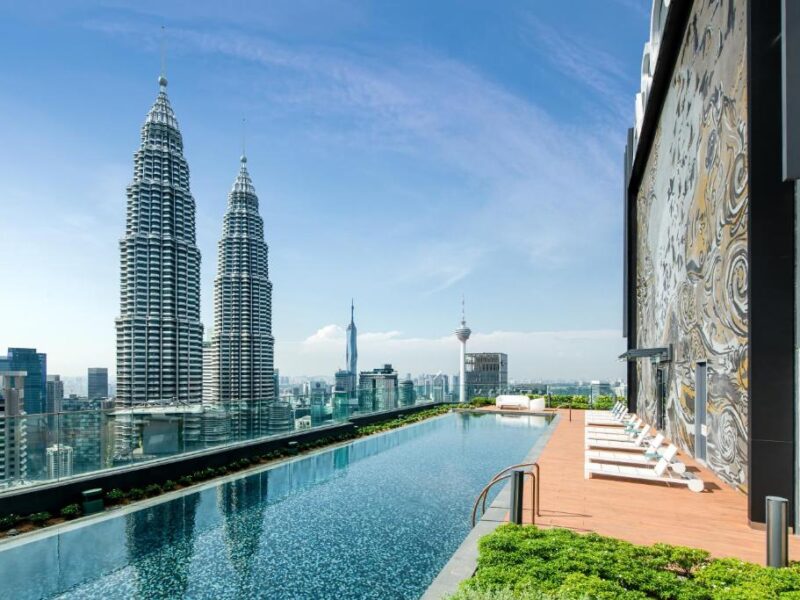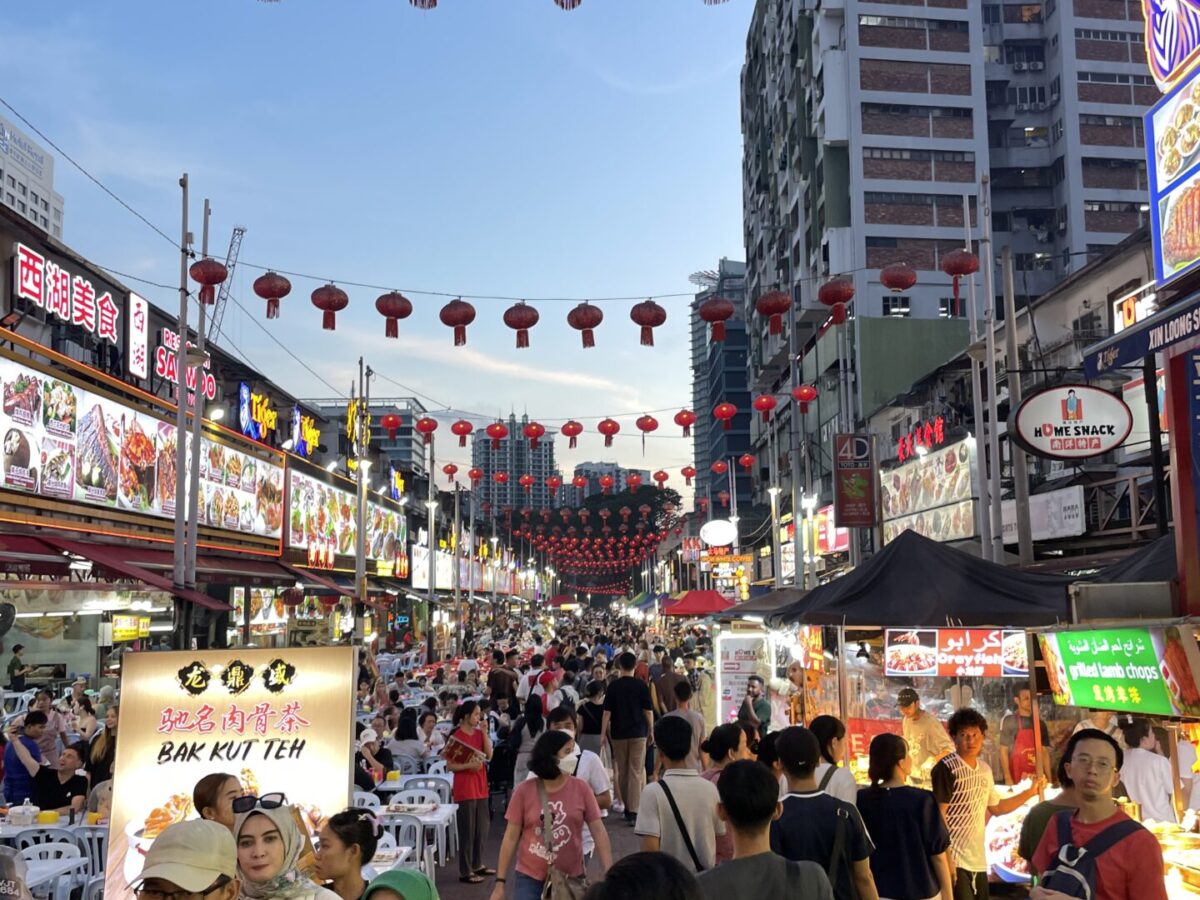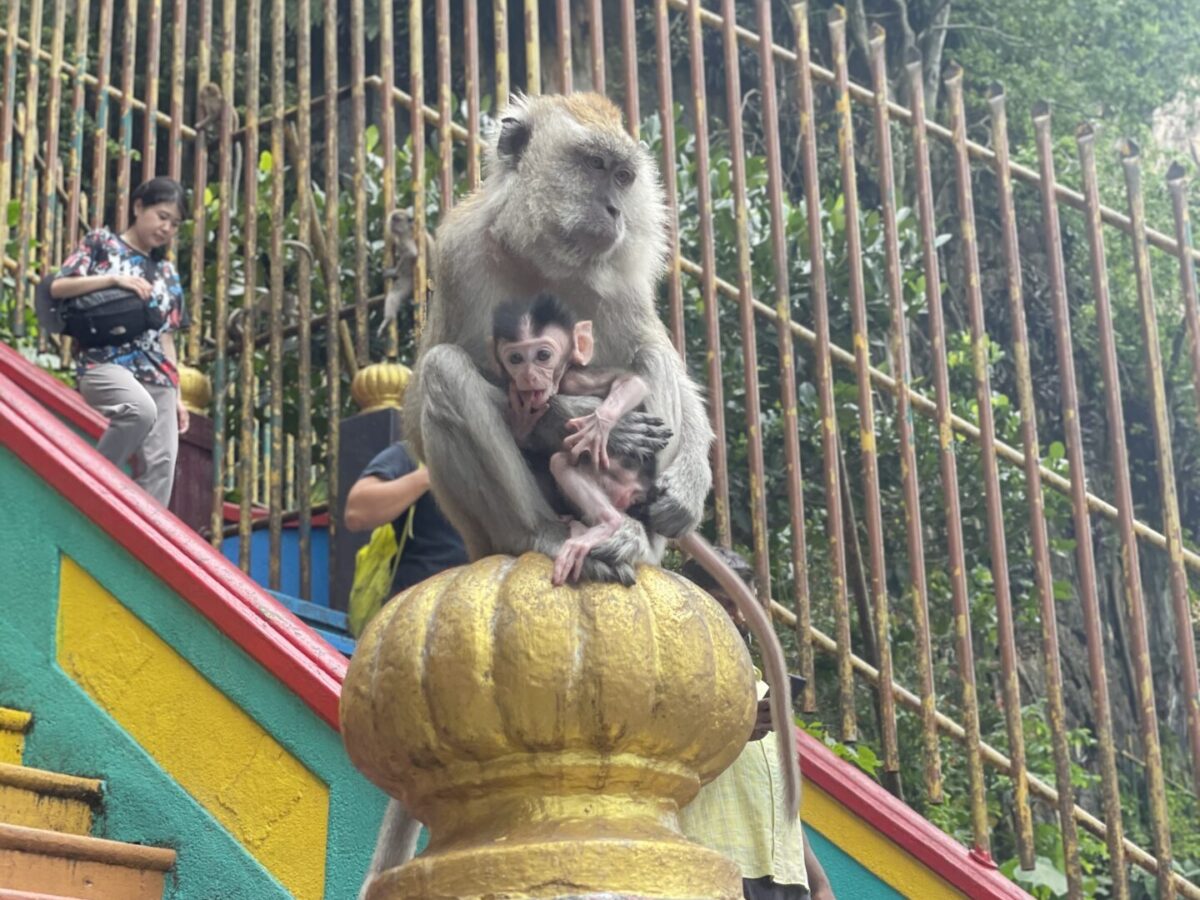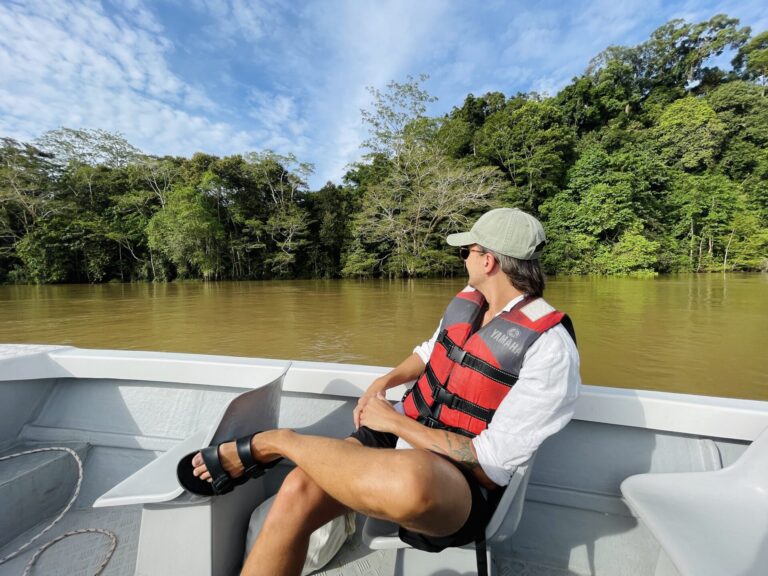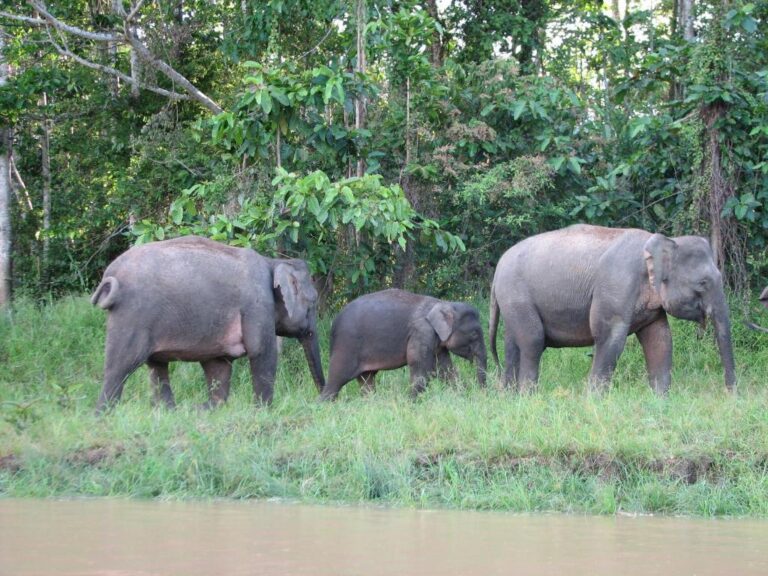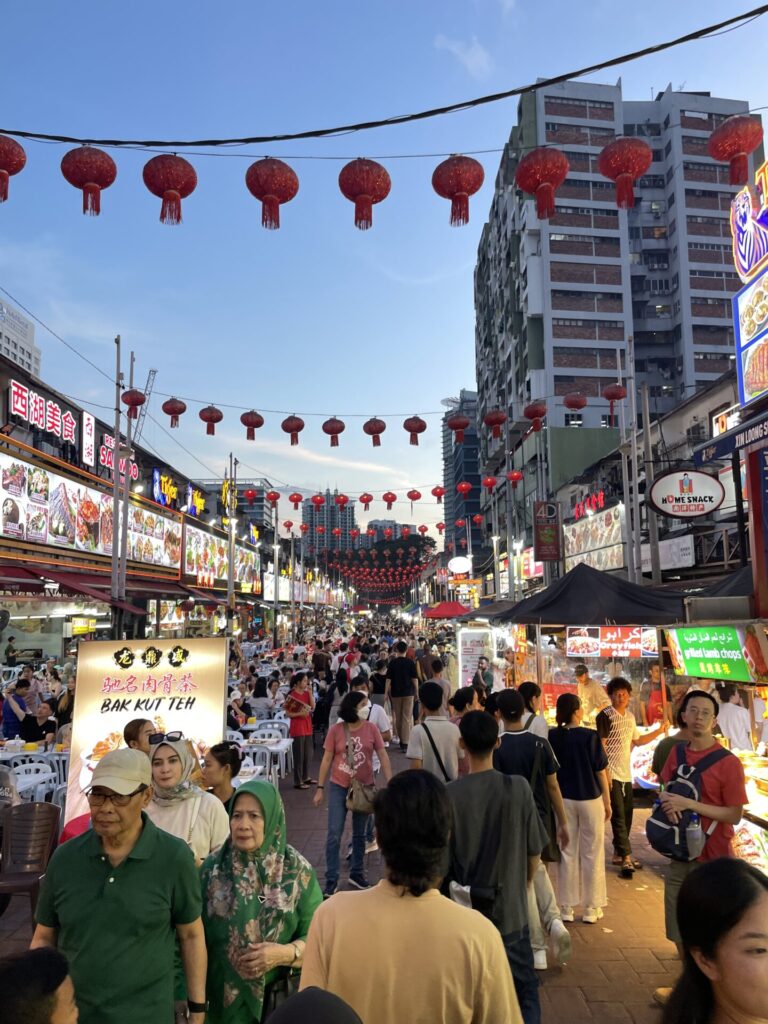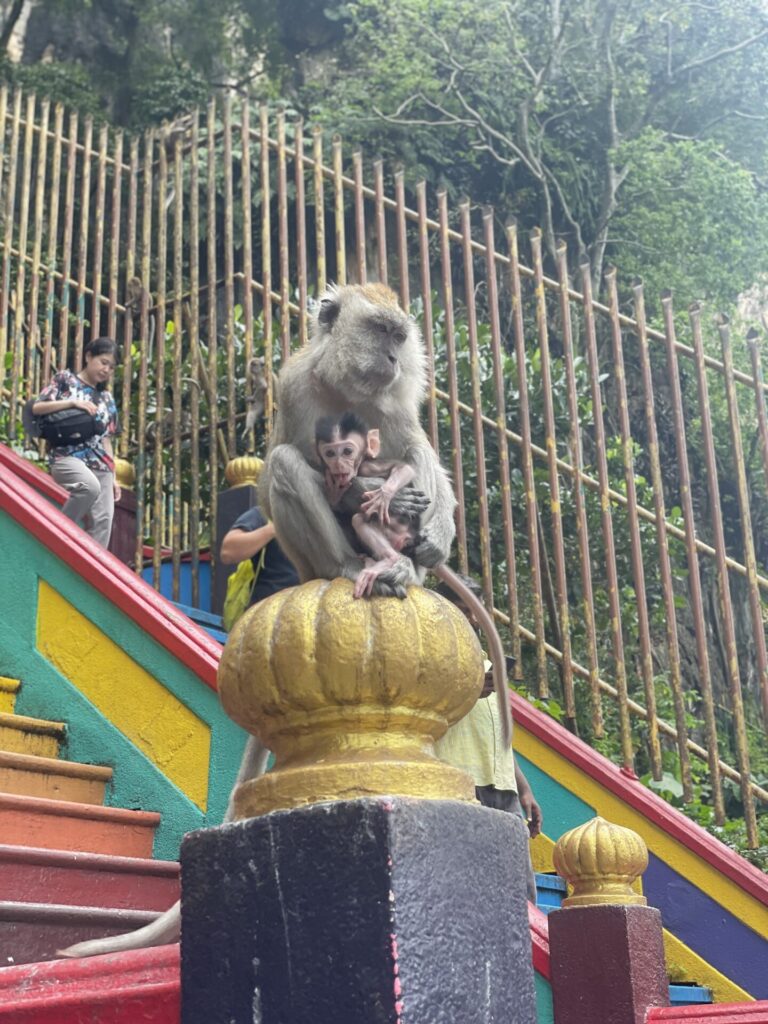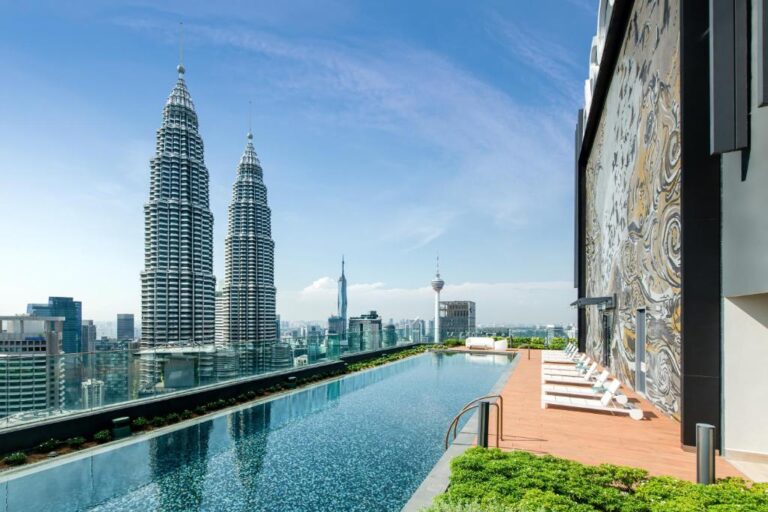The Best Place to See Orangutans in Borneo: My Experience & Travel Tips in 2025
The number one reason most people come to Borneo is to see orangutans and yes, that was definitely the main reason I came too. Orangutans are one of the most endangered species in the world, and outside of Sumatra, Borneo is the only place you can still see them in the wild.
Now, I’m obviously not a biologist, so this isn’t a scientific breakdown or anything like that. My goal here is to give you a real travel guide based on my own experience, where to actually go to see orangutans, how to get there, where to stay, and what I wish I had known before coming.
I just got back from a longer trip in Borneo (I was fully obsessed with all the wildlife), and to be honest, I had a hard time finding good information on how to plan a trip to see orangutans. So I made it my little mission to write down everything I learned to make it easier for you if you’re planning the same kind of adventure.
In a Rush? Here Are Our Favorite Kinabatangan River Lodges
⭐️⭐️⭐️ Bilit Adventure Lodge – Click here for rates & availability
⭐️⭐️ Sukau Greenview B&B – Click here for rates & availability
⭐️The Last Frontier Boutique Resort – Click here for rates & availability

The Best Place to See Orangutans in Borneo – My Experience
I want to start this little guide with my own experience. Personally, I always find it more helpful to hear what someone else actually did rather than just reading a checklist of instructions, so that’s what I’m doing here.
I spent about two weeks in Borneo, and all of my wildlife activities were in East Borneo, around the city of Sandakan. Sandakan itself isn’t exactly pretty (actually, it’s kind of the opposite), but it’s a great base for exploring the region.
The first time I saw orangutans was in Sepilok, a small area just outside Sandakan that’s home to the famous Sepilok Orangutan Rehabilitation Centre. This is where orphaned orangutans are raised and taught how to survive in the wild so they can (hopefully) be released back into their natural habitat. Seeing them for the first time, just swinging through the trees right above my head was amazing. That said, it was definitely more touristy than I expected.
The second time I saw orangutans was during a Kinabatangan River cruise, about two hours from Sandakan. I stayed at a river lodge and went out on a small boat, and during one of the cruises, we spotted a mother orangutan with her baby up in the trees. We were the first boat to find them, so it was just me and five other people watching quietly as they moved from tree to tree. It honestly felt magical, way more wild and intimate than Sepilok.



Where to See Orangutans in Borneo?
The most well-known place is Sepilok, which is just a short drive from Sandakan in Sabah, East Borneo. This is where you’ll find the Sepilok Orangutan Rehabilitation Centre, and honestly, if you’re short on time or just really want to guarantee seeing orangutans, this is your best bet.
Then you’ve got the Kinabatangan River, which is where I had my personal favorite orangutan encounter. This one’s way more natural, no fences, no feeding times, just proper jungle. You go out on a boat with a guide and basically hope for the best. Sometimes you see them, sometimes you don’t. But when you do, it feels way more raw and magical. I saw a mother and baby and just sat there in silence watching them for ages. Still one of my favorite travel memories ever.
There’s also Danum Valley and Tabin Wildlife Reserve, which are deeper into the rainforest and a bit trickier (and pricier) to get to. These are proper off-the-grid wildlife experiences and probably the most untouched places you can visit. I didn’t make it there myself this time, but if you’re really into trekking and want more of a remote jungle vibe, those could be worth looking into too.

Sepilok Orangutan Rehabilitation Centre – My Visit (The Easiest Way to See Orangutans)
The Sepilok Orangutan Rehabilitation Centre is probably the easiest and most accessible place to see orangutans in Borneo. Their whole mission is to rescue orphaned orangutans, usually babies that lost their mothers due to deforestation or poaching and help them relearn how to survive in the wild. So just to be clear, this is not a zoo. There are no cages, no fences, nothing like that. The orangutans can come and go as they please, but they do stick around for the twice-daily feedings.
I personally loved my visit to Sepilok. I started at the visitor center and watched the short intro film, which gave some good background on the work they’re doing. Honestly, it felt very ethical and well-run. I took a Grab from Sandakan (cheap and super easy), but you can also stay overnight in one of the lodges right near the sanctuary.
I got there around 10am for the morning feeding, and it was honestly such a cool experience, watching them swing through the trees, seeing baby orangutans clinging to their mums. It was super cute, and even though it’s a bit more structured and touristy, it still felt really special.
One tip: don’t leave right after the feeding. The crowd usually clears out as soon as the platform session ends, but we stuck around a bit longer and a couple more orangutans came back. It was way more peaceful, and we got to enjoy it almost by ourselves. After that, we headed over to the nursery, which most people visit first but I actually recommend doing it in reverse.


Kinabatangan River Cruise – Spotting Orangutans in the Wild
My favorite orangutan experience in Borneo was definitely the Kinabatangan River cruise. Don’t get me wrong, I really loved seeing them in Sepilok but that felt more like a semi-wild situation, if that makes sense. Out here on the Kinabatangan River, though, you’re in the real wild. No platforms, no feeding stations, just you, a guide, and whatever wildlife shows up.
I stayed in a river lodge in a little village called Sukau, right along the river. I spent two nights there and did multiple river cruises and jungle treks during my stay. This is the proper jungle experience: early morning and late afternoon boat rides through misty rainforest, listening to your guide scan the treetops for movement, and just taking in that pure nature feeling.
I got super lucky and saw wild orangutans during one of the cruises, swinging from tree to tree with their baby. It’s not guaranteed, so that made it even more special. Along the way, I also spotted proboscis monkeys, long-tailed macaques, hornbills, and silver leaf langurs.
If you’re lucky, you might even spot one of the so-called “Borneo Big 5”: orangutans, pygmy elephants, proboscis monkeys, crocodiles, and hornbills.
If you’re into wildlife, I’d really recommend doing this. Seeing orangutans in the wild is just different, it’s a slower, more immersive and a more unique experience.
I’ve written a few detailed guides on how to visit the Kinabatangan River, where to stay, and how to book your trip, so feel free to check those out if you’re planning to go.
How to Get to Kinabatangan River
How to Do a Kinabatangan River Cruise
Best Kinabatangan River Accommodation

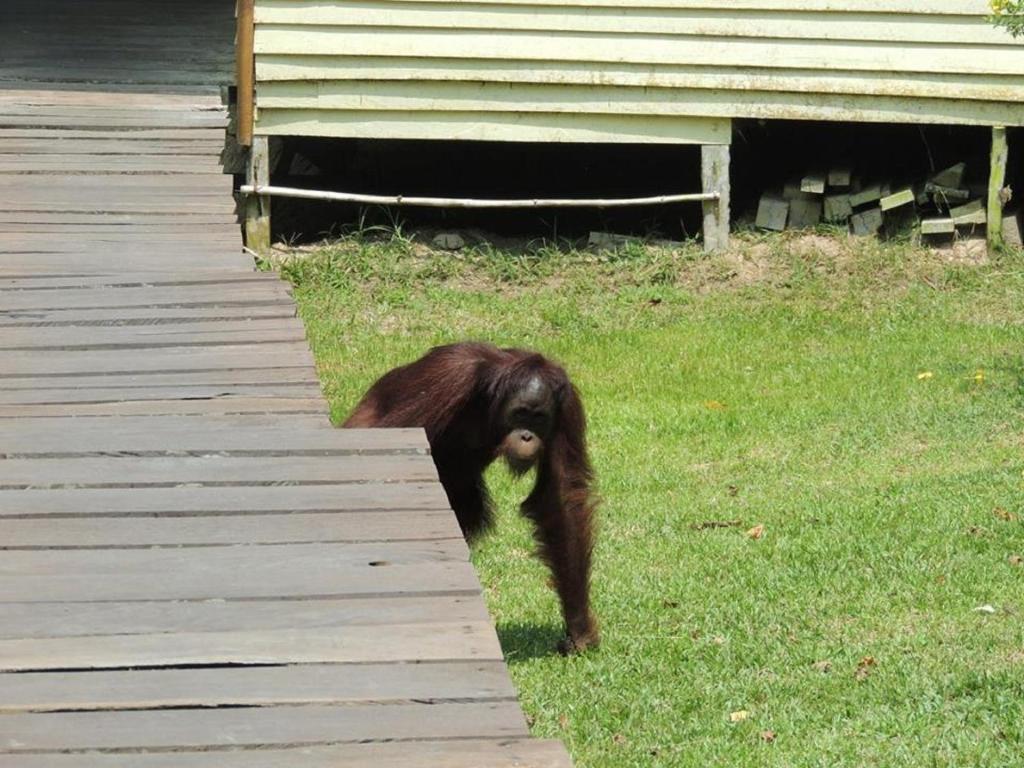


Danum Valley & Deramakot – Off-the-Grid Jungle (Worth Knowing About)
I didn’t make it to Danum Valley or Deramakot this time, but I still want to include them here because they’re two of the most important places in Borneo for spotting wildlife, especially if you’re serious about seeing orangutans in the wild.
Danum Valley
Danum Valley is a protected primary rainforest area in the southeast of Sabah. It’s much harder to get to (you need to stay at the Borneo Rainforest Lodge), but this is the real untouched jungle. You won’t find feeding platforms or scheduled tours here, it’s all about early morning treks with guides, looking for orangutans, gibbons, hornbills, and sometimes even clouded leopards if you’re extremely lucky. It’s not cheap or easy to visit, but if you’re into wildlife and want something more off-the-beaten-path, this is one of the best places in Borneo to be.
Deramakot Forest Reserve
Deramakot Forest Reserve is another hidden gem, even lesser known than Danum. It’s a sustainable logging forest (weird combo, I know) that has somehow turned into a wildlife haven. It’s especially popular among hardcore wildlife photographers because you have a pretty good chance of seeing orangutans, civets, and even wild cats here. Most people stay in very simple forest cabins, and you’ll need to organize a 4WD and a guide to get around.

Wild vs. Semi-Wild Sightings – What to Expect
Like I mentioned earlier, seeing orangutans in Sepilok is a totally different experience compared to spotting them deep in the wild. Sepilok isn’t a zoo, there are no cages or enclosures, and the orangutans can come and go as they like. But because there are feeding platforms, boardwalks, and a nursery, it still feels a bit more structured and less “wild,” if that makes sense. That’s not a bad thing, it’s just a different kind of experience. I actually really enjoyed it, and I’d definitely recommend checking out the visitor center to learn more about the amazing work they’re doing there. It gave me a lot of perspective on how much effort goes into rehabilitating these animals.
Then you have the proper wild orangutan sightings, like in the Kinabatangan Wildlife Sanctuary or Danum Valley. Here, the orangutans are doing their thing with zero human help. You’re out in the rainforest, scanning the treetops with a guide, hoping to catch a glimpse. It’s not guaranteed, and it takes more effort, but that’s also what makes it feel so special.
How Much Does it Cost to See Orangutans in Borneo
Once you’re actually in Sandakan, seeing orangutans can be surprisingly affordable. I paid around 30 MYR for a Grab from Sandakan to Sepilok, another 30 MYR to get back, and 30 MYR for the entrance ticket to the Sepilok Orangutan Rehabilitation Centre. So in total, that’s about 90 MYR or roughly $20 USD. And if you’re traveling with others, you can always split the Grab fare and make it even cheaper.
Seeing wild orangutans at the Kinabatangan River is a bit more of an investment, but it’s worth it. I stayed at a river lodge in Sukau, and most of these lodges offer full packages that include transport from Sandakan, all your meals, accommodation, and the river cruises. Prices usually start around $150–$200 USD for a 3-day, 2-night stay. If you’re after something more luxurious, expect to pay closer to $800 USD.
You can also book day trips from Sandakan to the Kinabatangan River or join a full guided tour around Borneo if you prefer having everything taken care of. Those obviously cost more, but I’ll leave some links for you below in case you want to explore those options.
–Kinabatangan River Day Trip from Sandakan
-Full Guided Wildlife Tour East Borneo With G Adventures


Best Time to See Orangutans in Borneo
If you’re coming to Borneo to see orangutans, stick to the dry season. Not just because you don’t want to be soaked, but because orangutans really don’t like the rain. On wet days, they’ll be hiding just like you would be, so your chances of spotting them drop quite a bit.
The best time to visit is between March and October, but I’d personally aim for the shoulder months like March, April, September, or October. June and July are peak tourist season (hello, European school holidays), so it can get pretty crowded. Shoulder season gives you a better shot at decent weather and fewer people.
Where to Stay in Borneo to See Orangutans
To keep things simple, I’ll just give you a few recommendations based on what I did and what I’d suggest. You’ve got two main options depending on what kind of orangutan experience you’re after.
If you’re visiting the Sepilok Orangutan Rehabilitation Centre, stay in Sepilok itself. It’s super quiet and green, with a few great lodges just a short walk from the sanctuary.
If you’re planning a Kinabatangan River cruise, then you’ll want to stay in Sukau, a small riverside village with a range of river lodges with everything from budget-friendly places to more comfortable eco-lodges. Most of them offer full packages that include transport, meals, and guided wildlife tours, so it’s all pretty straightforward once you’re booked in.
Sepilok:
Kinabatangan River:
–Sukau Greenview Bed & Breakfast
FAQs About Where to See Orangutans in Borneo
How to see orangutans in Borneo?
The easiest way is to visit the Sepilok Orangutan Rehabilitation Centre, you’re pretty much guaranteed to see them there. But if you want to see them in the wild, I highly recommend a Kinabatangan River cruise. That was the real highlight of my trip.
Best time to see orangutans in Borneo?
Definitely during the dry season, because orangutans seriously hate the rain. Aim for sometime between March and October. I’d suggest avoiding the European school holidays in June and July if you want fewer crowds.
Is it ethical to see orangutans in Sabah?
Yes, absolutely. The Malaysian government, along with British and international wildlife organizations, has put a lot of effort into conservation here. Both Sepilok and the river lodges in Kinabatangan operate with orangutan welfare in mind.
How much does it cost to see the orangutans in Borneo ?
A ticket to the Sepilok Orangutan Sanctuary costs around 30 MYR (about $7.50 USD), which is super affordable. If you want to do a full wildlife trip like a multi-day Kinabatangan package it’ll be more expensive, usually starting around $150–200 USD.
Final Thoughts on the Best Places to See Orangutans in Borneo
I absolutely loved seeing orangutans in Borneo. I started at Sepilok, which was a great intro, it’s not a zoo, and I highly recommend stopping by the visitor center and watching the short film to really understand the work they’re doing there.
But my personal highlight, without a doubt, was the Kinabatangan River cruise. Floating down the river and spotting actual wild orangutans swinging through the trees was unreal. If you’re heading to Borneo and you care about wildlife, don’t skip it.
Check Out More Of My Borneo Guides
Kinabatangan River Cruise: How to Do a Kinabatangan River Cruise
How to Get to Kinabatangan River: How to Get to Kinabatangan River
Where to Stay Kinabatangan River: Best Lodges & Kinabatangan River Accommodation
Kinabatangan River Travel Guide: Kinabatangan River Everything You Need To Know
Kinabatangan Wildlife Sanctuary: Kinabatangan River Safari: Is It Worth It?
Kinabatangan River Accommodation: My Top 7 Kinabatangan River Lodges
Sepilok Resorts: My Top 4 Places to Stay in Sepilok
Borneo Itinerary: My Amazing 10 Day Borneo Itinerary
Honeymoon in Borneo: The Best Borneo Honeymoon 2025
Borneo Packing List: My Ultimate Packing Guide for Borneo
Things to do in Borneo: My 12 Top Things to do in Borneo
Kota Kinabalu to Sandakan: How to Get From Kota Kinabalu to Sandakan
Where to Stay in Kota Kinabalu: Best Areas & Hotels in Kota Kinabalu
Things to do in Sandakan: My Top Things to do in Sandakan
Sepilok Orangutan Sanctuary: My Honest Review of the Sepilok Orangutans
Rainforest Discovery Center: My Review of the Rainforest Discovery Center
Check Out My Other Kuala Lumpur Guides
Where to Stay in Kuala Lumpur: My Favorite Areas & Hotels in KL
3 Day Itinerary Kuala Lumpur: How I spent 3 Amazing Days in KL
Things to do in Kuala Lumpur: My favorite Activities in Kuala Lumpur
Best Food to Eat in Kuala Lumpur: Where to Eat in KL Food Guide
Related Articles
Where to Stay in Kuala Lumpur Malaysia: My Top Areas & Hotels in 2025
For a lot of people, myself included, Kuala Lumpur often ends up being the gateway into Southeast Asia. Flights from Europe or Australia frequently stop over or connect here, so chances are, you’ll pass through at some point. Whenever that’s the case for me, I usually make it a habit to stay for at least…
3 Day Itinerary Kuala Lumpur: How I Spent an Amazing 3 Days in KL 2025
For a lot of people, including me, Kuala Lumpur often ends up being the gateway to Southeast Asia. Flights from Europe or Australia frequently land here or at least connect through, so over time, I’ve made it a bit of a habit: if there’s a stopover in KL, I always try to spend at least…
The 7 Best Things to Do in Kuala Lumpur Malaysia: My Favorite Activities in KL
I’ve said this in a few of my other articles already, but Kuala Lumpur is definitely one of my favorite big cities in Southeast Asia. It’s got that proper big-city energy, a huge skyline, tons of things to do, but it’s still super affordable. I always think of it as a cheaper, more laid-back version…


